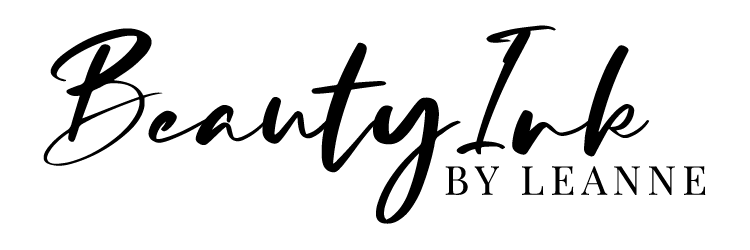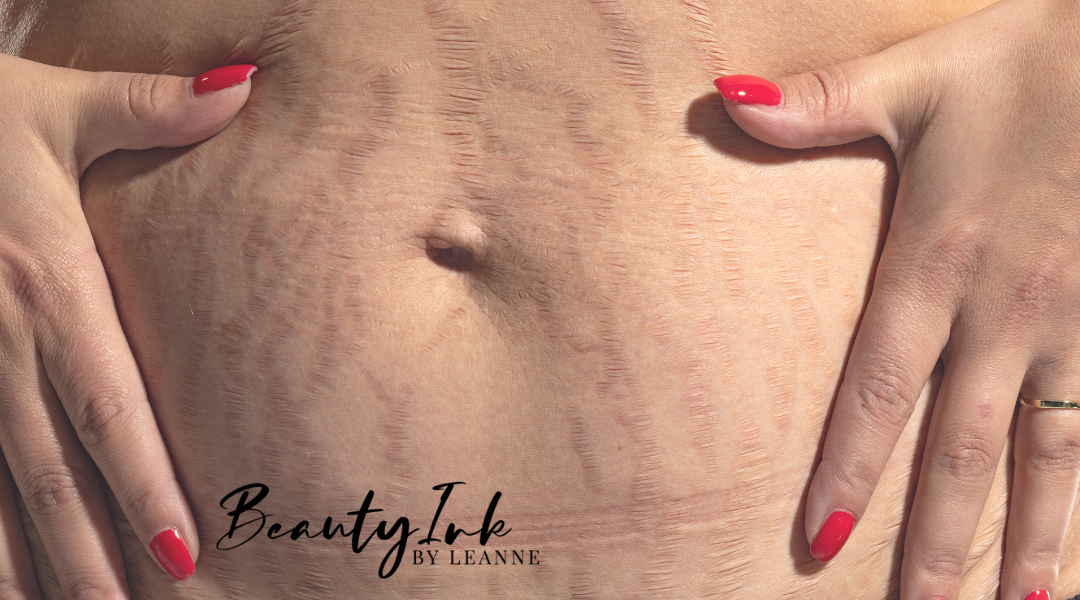Stretch marks are wavy, striped marks that often appear on your skin when it’s stretched too quickly. They’re most often found on the belly, thighs, hips, or arms and occur between 80% and 90% of the population, making them a common condition. At first, stretch marks will appear red or purple but they tend to fade to a lighter silvery shade over time as the skin heals. They’re completely normal and not a threat, but they can be unsightly and cause discomfort. Fortunately, stretch marks can be treated.
Are Stretch Marks Good or Bad?
Stretch marks aren’t inherently good or bad—they’re simply a natural part of life. Nearly everyone experiences them at some point, whether from pregnancy, weight fluctuations, or growth spurts. Some see them as symbols of transformation and wear them as a badge of honor, while others may feel self-conscious. Either way, they pose no health risk, and whether you treat them cosmetically is entirely up to you.
Do Stretch Marks Mean Weight Loss?
Stretch marks in men and stretch marks in women can be a sign of weight loss, but this is not always the case. Stretch marks form when your skin stretches or contracts quickly, whether through weight loss or weight gain, or even muscle gain or weight. This is because the skin cannot expand or contract at the same rate as the body’s shift, resulting in stretch marks.
What Are Stretch Marks Caused By?
Stretch marks are caused by the stretching of the skin – as the name suggests! The severity of the stretch marks will depend on a range of factors, including:
- The degree of stress on the skin
- Your genetic predisposition
- Your level of cortisol as this weakens protein in your skin; elastin
What Are The Risk Factors of Stretch Marks?
Anyone can develop stretch marks at some point in their lives, but there are some factors that can increase your chance of getting stretch marks. The risk factors or causes of stretch marks include:
- Having a genetic history of stretch marks.
- Being female
- Pregnancy
- Rapid growth in adolescence
- Breast augmentation surgery
- Rapid weight gain or loss
- The use of corticosteroids
- Using anabolic steroids
- Genetic disorders like Cushing or Marfan syndromes
Can You Prevent Stretch Marks?
There is no guaranteed way you can prevent stretch marks but you can try to reduce the risk by keeping your skin moisturized and hydrated. It’s particularly important to use creams, oils and lotions when you’re going through a phase of rapid weight gain or loss, such as dieting, pregnancy, or adolescence as this can improve the elasticity of your skin. However, the biggest risk is genetics so if your family is prone to getting stretch marks, ensure you keep your skin moisturized.
Do Stretch Marks Go Away?
Stretch marks will diminish over time, starting as a dark purple or reddish color that fades into a silverish hue over time. Unfortunately, stretch marks don’t go away completely and there is no complete stretch mark removal. The skin’s healing process will diminish those deep tears and gradually smooth out the scars so that, while some texture might remain, the color will fade. If you’re not worried about the appearance of your stretch marks once they’ve faded, that’s great – they will often blend into your skin. But because stretch marks are essentially a form of scarring, they might cause undue cosmetic concerns, particularly if they’re in a really visible position on your body.
How To Treat Stretch Marks?
Stretch marks will not totally disappear but there are ways to treat stretch marks so you can minimize their appearance. Depending on the placement and type of stretch mark, you might have to try different treatments, but there are many ways you can reduce the appearance of your stretch marks.
Topical Creams
If you’re worried about fresh stretch marks, then treating them early is best. You should start by applying creams with ingredients like retinol or hyaluronic acid to reduce the appearance of your stretch marks. These ingredients will stimulate your natural collagen production which is needed for the healing process. Cocoa butter, Vitamin E, or coconut oil are also great for moisturizing and smoothing the skin and can be administered while the stretch marks are still red or purple.
Laser Therapy
Certain laser treatments can be used to stimulate collagen production, encourage healing of the stretch marks and improve the skin’s texture. This might need to be done over quite a few sessions and can get quite expensive if your stretch marks are not as responsive to the laser treatment.
Microneedling
This is where tiny needles are used to create small injuries to the skin which encourage the production of collagen and elastin in the healing process. This can help reduce the appearance of stretch marks but, like laser treatment, can get costly as it requires a few sessions.
Chemical Peels
Another stretch mark treatment is applying a solution that causes the top layer of skin to peel away so that healthier skin can emerge. This could reduce the appearance of stretch marks but generally works better on new stretch marks.
Stretch Mark Camouflage
One of the best treatments for stretch marks is a tattoo treatment that originated in Brazil known as Stretch Mark Camouflage. This form of medical tattooing only needs to be done once your stretch marks have healed and is incredibly effective in reducing the appearance of stretch marks. The technician matches the tattoo ink exactly to your skin pigment so that the stretch mark is camouflaged. Additionally, the needle – like with microneedling – stimulates the body’s natural healing response.
Where Do You Get Stretch Mark Camouflage?
BeautyInk By LeAnne is the best place for Stretch Mark Camouflage treatment in Washington State. She uses a custom blend of selected pigments for a natural skin tone match, with only high-quality, vegan, cruelty-free inks used in all treatments.
If you have any more questions about the Stretch Mark Camouflage treatment, contact BeautyInk By LeAnne today!


